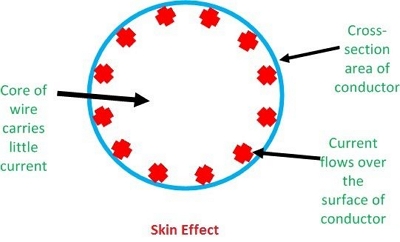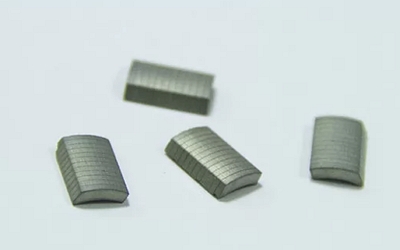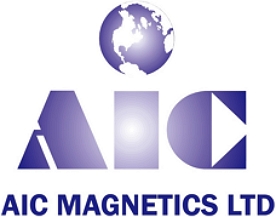Samarium Cobalt (SmCo) and Neodymium Iron Boron (NdFeB) are metallic materials with low electrical resistivity due to their excellent conductivity. However, this characteristic is disadvantageous for rotating machinery such as electric motors, resulting in eddy current losses and consequent heating of machinery, including magnets. Therefore, eddy current loss in magnets is a critical consideration for both magnet and motor designers.
To understand and reduce eddy current loss, we must first understand its origin. A phenomenon known as the’skin effect’ occurs when alternating current passes through a conductor, causing an uneven distribution of current density across the conductor’s cross section. As the frequency of the current increases, the current concentrates more on the conductor’s surface, reducing the internal current, a phenomenon known as the skin effect.

Eddy currents cause the skin effect. Electromagnetic induction laws tell us that alternating electric fields generate alternating magnetic fields. When an alternating current passes through a conductor, it induces vortex-like currents within and around the conductor, known as eddy currents.
Closer to the center of the conductor, the induced electromotive force and thus eddy currents are stronger, which more effectively impedes the original current, resulting in a lower current density at the center compared to the surface.
As the induced electromotive force increases with frequency, the skin effect becomes more pronounced at higher frequencies. At very high frequencies, the current essentially flows through only a thin layer at the conductor’s surface, effectively reducing the cross-sectional area and effective utilization of the material.
Given the low electrical resistance of SmCo and NdFeB magnets, eddy currents in alternating magnetic fields are generally significant. These currents cause the magnets to heat up due to Joule heating, potentially leading to thermal demagnetization if temperatures become too high.
The magnitude of eddy current loss depends on the method of magnetic field change, magnet motion, magnet shape, magnetic permeability, and resistivity. In rotating machinery, higher rotational speeds (equivalent to frequency) and magnetic permeability, combined with lower resistivity, result in smaller skin depths and greater losses. In fields such as electric vehicles and elevators, where speed control is crucial, permanent magnet motors controlled by inverter power sources suffer increased eddy current loss due to high frequency harmonics, leading to thermal demagnetization.
To reduce eddy current loss in sintered NdFeB magnets, several technical methods have been proposed from the perspective of motor design, such as shielding columns around the magnet, segmenting the magnet, and isolating it laterally.

From a magnet perspective, one of the most effective ways to reduce motor eddy current loss is to use bonded magnets. The presence of a binder and its substantial volume fraction increases the resistivity of bonded magnets by 102 to 104 times compared to sintered magnets. However, this limits the motor’s power and maximum operating temperature. Therefore, the most direct approach is to increase the resistivity of the sintered magnets themselves.
There are various methods to increase the resistivity of sintered magnets, such as adding high resistivity powders (such as Al2O3) or applying SiO2 coatings. However, these methods may affect the magnetic properties of the sintered magnets to some extent. Therefore, a balance between resistivity and magnetic performance must be achieved during the magnet development process.
Post time: Nov-10-2023
